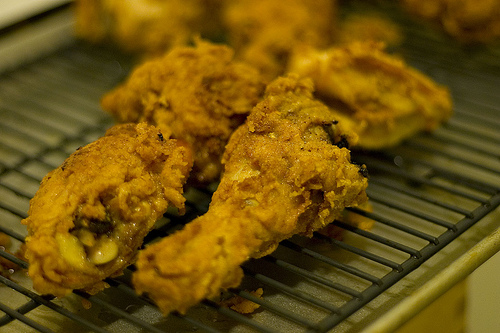I grew up in Maryland and, because of that, I have some strong opinions about crab cakes. I’m even inclined to voice these opinions to anyone who’s willing to listen. When we lived in California, I had a number of conversations about crab cakes with coworkers who promptly thought I was a bit obsessed about the whole thing. That continued until another person who had lived in Maryland joined our group who had equivalently strong and vocal opinions about the matter.
I’ve tried crab cakes in other styles from other regions, and as good as they may be, they don’t compare with a Maryland crab cake. While I will freely argue about the various merits of the different styles, in the end, it’s a preference based on the experience of eating them as a kid.
In Maryland, crab cakes are everywhere. They’re on almost every menu. From a food stand to a deli to a fine dining restaurant: all have their crab cakes. The church I attended growing up used to have all-you-can eat crab cake and ham suppers as fundraisers.
There are a few things, in my mind at least, that make a crab cake Maryland style. First, it must include Old Bay. I’m usually not a fan of pre-mixed spices but I make an exception for Old Bay. Second, the binder should be saltine crumbs; bread crumbs don’t give the right texture. Finally, and most importantly, it should be made with Chesapeake Bay blue crabs.
Unfortunately, there are barely enough blue crabs in the Chesapeake Bay to supply the surrounding region. Plenty of crab from North Carolina, the Gulf, or even Asia is sold in this area. But when good Chesapeake Bay crab meat is available, the resulting crab cakes can be phenomenal.
We’re lucky that Buster’s Seafood had some lump backfin at the farmer’s market last Saturday. As soon as I saw it, despite the significant cost involved (and that’s only going to get worse because of the oil spill in the Gulf), I knew I had some crab cakes in my future.
Maryland Crab Cakes
Adapted from Chesapeake Bay Cooking With John Shields
1 lbs. lump backfin crabmeat
1 egg
2 tbs mayonnaise
1 tsp dry mustard
1/2 tsp ground black pepper
1/2 tsp kosher salt
1 tsp Old Bay
2 tsp Worcestershire sauce
2-3 dashes Tabasco
1/4 cup saltine crumbs
peanut oil, for deep frying
- Pick over the crab meat for shells and place in a bowl.
- In a separate bowl, whisk together the mayonnaise, dry mustard, black pepper, salt, Old Bay seasoning, Worcestershire sauce, and Tabasco.
- Pour the mixture over the top of the crab meat and add the cracker crumbs. Carefully mix together, taking care not to break the pieces of crab apart.
- Form into crab cakes 3″ wide by 1″ tall. The crab cakes should hold together but still be loose.
- Deep fry the crab cakes, in batches if necessary, at 375ºF until well-browned, about 3 minutes. Remove from the oil and drain on paper towels.
- Serve immediately with french fries and cole slaw.
Serves 4.



















